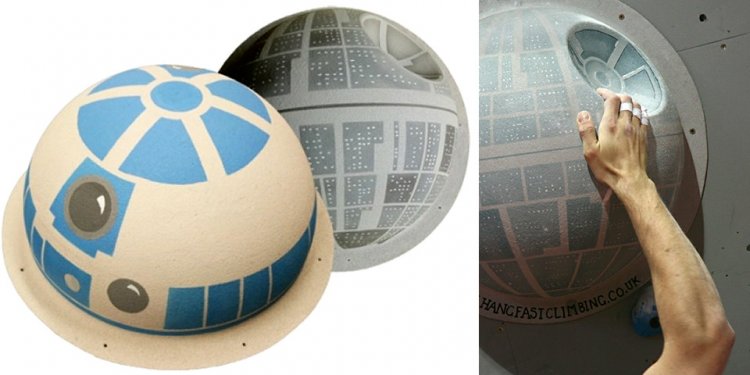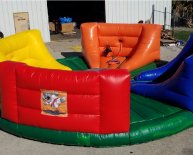
Climbing wall holds
The best way to become a better climber is to simply get out and climb. Once you've gotten started, regular climbing will allow you to quickly build up strength and endurance. And just being at a rock gym will allow you to watch better climbers and mimic how they move on the wall.
But another important aspect of developing your climbing skills is to learn the types of holds and how to use them. Climbing holds come in a huge variety of shapes from blobs to bats. Many of these shapes try to mimic real rock features while others are merely for fun. But it is not the specific shape that matters, but rather how that shape can be utilized. In fact, even turning the same shape upside down might result in a completely different type of hold.
Become familiar with the types of holds listed below and how to use them. You will surely improve your climbing just by being able to predict how to use a hold by looking at it. Plus, it will make sharing beta, or the sequence of moves, with fellow climbers much easier.
Jugs
Jugs are every climber's best friend. The term basically encompasses every large, easy to grab hold. They can be held with the entire hand (and sometimes both) while requiring minimal energy. Beginner routes can be made up entirely of jugs. But even advanced routes will often have them on overhangs and roofs.
No special technique is required to use jugs. However, it can be helpful to keep your arms straight to keep them from getting prematurely fatigued. Also, don't be afraid to take advantage of the solid handhold to do a foot smear.
Mini-Jugs and Incuts
Mini-jugs and incuts refer to the same type of hold. These holds are smaller than jugs but still provide a very solid handhold. Generally mini-jugs are only deep enough to fit up to the second knuckle while jugs will be deep enough to fit your entire finger behind. All mini-jugs and incuts have a lip to get your fingers behind.
Just like with jugs, the most efficient way to use mini-jugs is with a straight arm and straight wrist. In most cases, the maximal length of fingers should be placed inside the hold. However, if the hold is less than one knuckle deep, it is best to put the joint directly on the lip while below the hold. This technique allows a more natural open grip (as opposed to a closed grip crimp described below) to reduce the chance of injury.
Slopers
Slopers can be very difficult for new climbers but are quite a necessity on more advanced routes. They tend to have no lip or edge of any kind. Or if they do possess a featured surface, it is practically useless to get a direct grip. Slopers make up for their roundness with a rough or "positive" surface.
The secret to slopers is to get as much surface area of the hand on the climbing hold. The friction generated between the hand and the hold keeps the climber from falling off. It takes some getting used to before slopers feel comfortable and trustworthy. Slopers are best hung on from below with straight arms.
Pockets
Pockets are essentially round holes that allow you to hook between 1 and 3 fingers. They vary in depth and texture but generally do not have any sort of lip.
When using pockets, you want to most efficiently use the few fingers that fit. For one finger pockets, you want to use your strongest finger-generally your middle or index finger. Two finger pockets are best held with your middle and ring finger. Using these similarly sized fingers keeps your wrist in a straight line. Three finger pockets use all but the pinkie. Sometimes it can be advantageous to jam more fingers into a smaller pocket, but not always.
Pinches
Pinches are usually vertically oriented holds. They can share similar properties to slopers and other holds, but are narrow enough to fit the entire hand around.
Pinches require using the thumb on the opposite side of the hold to create a strong squeezing force. Of all the climbing holds, pinches usually require the greatest amount of strength. Depending on the shape of the hold, the pinch could use between 1 and 4 fingers opposing the thumb. The thumb can be used on other types of holds to provide additional holding force, but is essential for pinches.
Crimps and Chips
Crimps and chips are generally small, thin climbing holds. Chips are most commonly footholds but can also be used for hands on advanced climbing routes. These types of holds are seldom found on beginner routes due to a greater need for strength and solid technique.

















